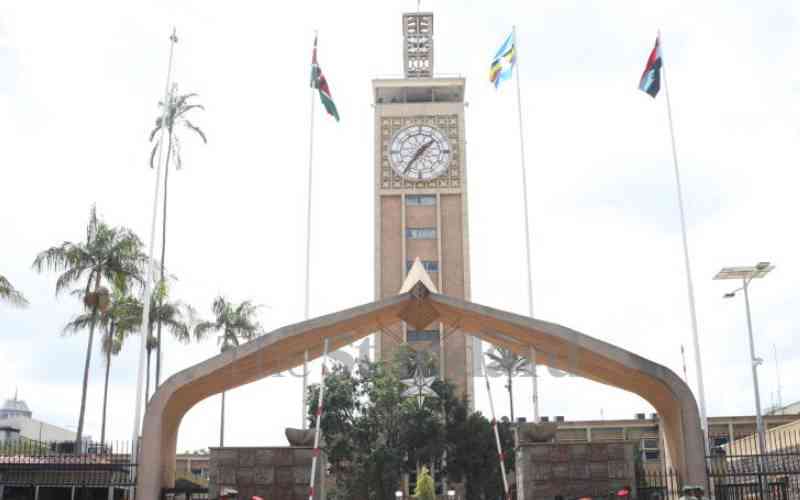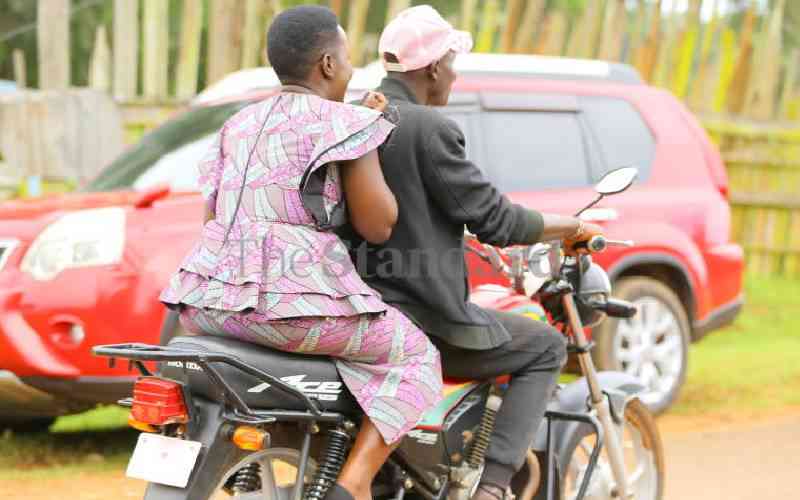In the words of Abraham Lincoln, “When you have got an elephant by the hind leg, and he is trying to run away, it is best to let him run.” That, however, would hardly apply when death is stalking our streets from a public enterprise gone haywire.
In a three-part exclusive expose beginning today, The Standard examines in detail what spawned the boda boda (bicycle and motorcycle taxi) craze, the pitfalls, uplifting stories of enterprise triumphing over poverty, and the shortsightedness that have left communities in mourning and countless families orphaned. Where did the rain start beating us on the boda boda debacle that is threatening to be a licence to kill?
The story is the same, from Kisumu to Malindi, Kisii to Kiambu, Nairobi to Isiolo, and Rongo to Tigania and Nakuru, the body count of boda boda riders and their fare-paying charges is rising fast enough to raise eyebrows and demands made for urgent life-saving action.
While a 2005 UNDP report lauded the boda boda for employing thousands of people in Kisumu Town, the grim statistics today, would make the UNDP seriously revise its optimism of the then phenomenal growth of the taxis, that boosted employment in spectacular fashion.
The affordability of the bicycle morphed into a mass transport method in many parts of the country and improved rural people’s access to facilities like markets, clinics and schools.
Motorised cousin
Added to this, the poor road networks, unruly matatu operators and poverty, conspired to revolutionise public transport in villages and now all urban centres.
And soon, the bicycle taxi was joined by its motorised cousin, the two-wheeled motorcycle and the three-wheel tuk tuk. These, however, came with a heavy price.
However, worldwide, studies show that motorcycles have a higher fatality rate compared to cars, while motorcycle rider deaths are nearly 30 times more than drivers of other vehicles. It was also noted that riders aged below 40 were 36 times more likely to be killed than other operators of the same age, according to 2005 data from the National Highway Traffic Safety Administration, in the US.
The Hurt Report, published in 1981 in the US had 55 findings, and made major recommendations for law enforcement and legislation. Among these, 75 per cent of motorcycle accidents involved collision with another vehicle, usually a passenger vehicle, while the remaining 25 per cent were single motorcycle accidents.
Also, motorcycle rider error was the accident precipitating factor in two-thirds of the cases and that almost half of the fatalities showed alcohol involvement.
The report’s other findings show that the wearing of appropriate gear, like, helmets and durable garment, mitigates injuries substantially, while being visible and conspicuous, saved lives.
In Kenya, bicycles have been disparaged as being a threat to riders’ virility, while the tuk tuks were ungainly and noisy. As a result, the motorcycle has become the vehicle of choice for short haul trips.
The daily carnage, however, depicts our shame for having put the cart before the horse. Government rushed to licence thousands of riders before building roads and pavements along major highways and enacting legislation to mitigate accidents.
Criminalised
Stay informed. Subscribe to our newsletter
These would cover issues of safety, reflective clothing, reflective safety strips on motorcycles, and rigorous training like that demanded in Britain, the US and the Netherlands, which have very large numbers of cyclists.
The tragedy in Kenya has been the casual manner rider training is conducted, the lack of vetting of the operators and other basic concerns ahead of licensing. This has led to many motorcyclists being members of vigilante gangs like Mungiki, mostly in Nairobi’s Eastlands, the city centre, Kangemi and Central Province.
Periodic swoops by traffic police are too little to late, as the many youth that have made the ubiquitous motorcycle taxi a full-time job would be criminalised and forfeit this gainful employment opportunity.
A rethink of the boda boda phenomenon is needed at ministerial level so that the cyclists are not licensed to kill after a cursory one-hour training session.
 The Standard Group Plc is a
multi-media organization with investments in media platforms spanning newspaper
print operations, television, radio broadcasting, digital and online services. The
Standard Group is recognized as a leading multi-media house in Kenya with a key
influence in matters of national and international interest.
The Standard Group Plc is a
multi-media organization with investments in media platforms spanning newspaper
print operations, television, radio broadcasting, digital and online services. The
Standard Group is recognized as a leading multi-media house in Kenya with a key
influence in matters of national and international interest.
 The Standard Group Plc is a
multi-media organization with investments in media platforms spanning newspaper
print operations, television, radio broadcasting, digital and online services. The
Standard Group is recognized as a leading multi-media house in Kenya with a key
influence in matters of national and international interest.
The Standard Group Plc is a
multi-media organization with investments in media platforms spanning newspaper
print operations, television, radio broadcasting, digital and online services. The
Standard Group is recognized as a leading multi-media house in Kenya with a key
influence in matters of national and international interest.









